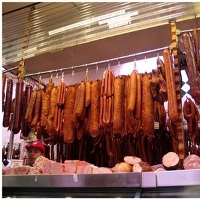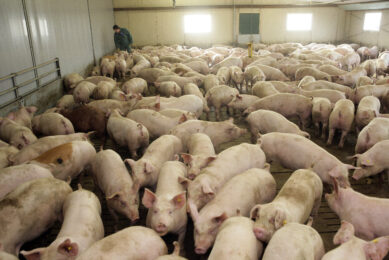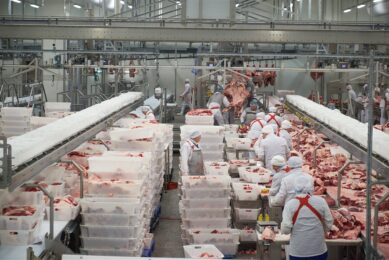Belgium reliable pork supplier in 2008

The international pork trade will experience high production and processing costs, a peak in the pork cycle coupled with a strong Euro in 2008. These are the predictions of the VLAM Belgian Meat Office.
These forecasts are based on a market study carried out by the Swiss research institute Gira.
Decrease in production
Profitability is a problem in the international pork sector – feed prices have increased causing higher production costs. In addition, supply is abundant while demand remains low. The strength of the Euro is also obstructing international trade.
In the coming months, production would not seem to decrease worldwide for the time being, so that prices cannot increase yet either. However, German producers have already been reacting to the low prices, so that an initial recovery is noticeable in Germany. Thus a great number of sows were slaughtered in the summer months, so that production fell to a clearly lower level at the beginning of 2008. In Belgium too a decrease in pig production has been forecast.
Slaughter situation
The Belgian Meat Office predicts that the total number of pig slaughters in Germany will increase in 2008. The flow of pigs for slaughter entering Germany from Denmark and the Netherlands is the driving factor for the increase.
In addition, new livestock trade streams are developing, e.g. from The Netherlands and Denmark to the East-European countries Poland, Hungary and Romania.
In Belgium pork production has stabilised for the time being. It thought to be only temporary and the downward trend will continue again.
Belgian slaughterhouses are importing more and more pigs for slaughtering to deal with this trend. In 2007 no less than 240,000 more live pigs were imported into Belgium than in 2006.
Exports outside EU
9% of EU production in 2007 represented pork exports. The market has remained stable. However, the Belgian Meat Office has noticed shifts between the various export regions.
Russia offers good perspectives for pork export as it is a major purchaser of cuts that are less in demand in Europe. Demand for high-quality pork cuts is also rising there.
South-Korea is also proving to be an interesting export market. Fierce competition reigns in the market.
Australia and China are among the remaining countries which are interesting for European pork exporters.
Trade within EU
Pork trade between the various European countries features various specialised flows based on the different eating cultures within Europe.
Germany, for example, is now a greater exporter than importer for the first time.
Danish and Dutch companies also benefit from the favourable industrial climate and invest in their own processing plants there.
A number of Danish companies are also venturing to the British market.
Italy and the United Kingdom are major pork importers, whilst Greece stands out as a growth market for pork import.
Related website:
• Belgian Meat Office
Join 18,000+ subscribers
Subscribe to our newsletter to stay updated about all the need-to-know content in the pigsector, three times a week. Beheer
Beheer










 WP Admin
WP Admin  Bewerk bericht
Bewerk bericht